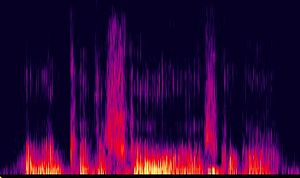Template:Featured Article/doc: Difference between revisions
imported>Daniel Mietchen m (→Usage) |
John Leach (talk | contribs) m (Text replacement - "CZ:New Draft of the Week" to "Archive:New Draft of the Week") |
||
| (7 intermediate revisions by 2 users not shown) | |||
| Line 1: | Line 1: | ||
This template | This template is for displaying the [[CZ:Article of the Week|Article of the Week]] and [[Archive:New Draft of the Week|New Draft of the Week]] on the [[Welcome to Citizendium|home page]].<br /> | ||
Prior to an article being featured, it will be shown in the list of candidates using {{tl|Featured Article Candidate}}. | |||
=== Usage === | === Usage === | ||
Certain changes ''must'' be made to candidate articles before they can be featured.<br /> | |||
These changes should be made well before an article is featured, and are listed on the {{tl|Featured Article Candidate}} page. | |||
Once a candidate article becomes a wining featured article, the code below should be placed in the '''Current Winner''' section of the [[CZ:Article of the Week|Article of the Week]] or [[Archive:New Draft of the Week|New Draft of the Week]] page:<br /> | |||
{{ | <code><only<nowiki>include>{{Featured Article|Article Name}}</only</nowiki>include></code> | ||
=== Example === | === Example === | ||
< | The following code gives the result displayed below the line:<br /> | ||
{{ | <code><nowiki>{{Featured Article|Speech Recognition}}</nowiki></code> | ||
</ | ---- | ||
{{Featured Article|Speech Recognition}} | |||
{{ | |||
Latest revision as of 04:06, 8 March 2024
This template is for displaying the Article of the Week and New Draft of the Week on the home page.
Prior to an article being featured, it will be shown in the list of candidates using {{Featured Article Candidate}}.
Usage
Certain changes must be made to candidate articles before they can be featured.
These changes should be made well before an article is featured, and are listed on the {{Featured Article Candidate}} page.
Once a candidate article becomes a wining featured article, the code below should be placed in the Current Winner section of the Article of the Week or New Draft of the Week page:
<onlyinclude>{{Featured Article|Article Name}}</onlyinclude>
Example
The following code gives the result displayed below the line:
{{Featured Article|Speech Recognition}}
In computer technology, Speech Recognition refers to the recognition of human speech by computers for the performance of speaker-initiated computer-generated functions (e.g., transcribing speech to text; data entry; operating electronic and mechanical devices; automated processing of telephone calls) — a main element of so-called natural language processing through computer speech technology.
Speech derives from sounds created by the human articulatory system, including the lungs, vocal cords, and tongue. Through exposure to variations in speech patterns during infancy, a child learns to recognize the same words or phrases despite different modes of pronunciation by different people— e.g., pronunciation differing in pitch, tone, emphasis, intonation pattern. The cognitive ability of the brain enables humans to achieve that remarkable capability. As of this writing (2008), we can reproduce that capability in computers only to a limited degree, but in many ways still useful.
Writing systems are ancient, going back as far as the Sumerians of 6,000 years ago. The phonograph, which allowed the analog recording and playback of speech, dates to 1877. Speech recognition had to await the development of computer, however, due to multifarious problems with the recognition of speech.
First, speech is not simply spoken text--in the same way that Miles Davis playing So What can hardly be captured by a note-for-note rendition as sheet music. What humans understand as discrete words, phrases or sentences with clear boundaries are actually delivered as a continuous stream of sounds: Iwenttothestoreyesterday, rather than I went to the store yesterday. Words can also blend, with Whaddayawa? representing What do you want?
Second, there is no one-to-one correlation between the sounds and letters. In English, there are slightly more than five vowel letters--a, e, i, o, u, and sometimes y and w. There are more than twenty different vowel sounds, though, and the exact count can vary depending on the accent of the speaker. The reverse problem also occurs, where more than one letter can represent a given sound. The letter c can have the same sound as the letter k, as in cake, or as the letter s, as in citrus.
In addition, people who speak the same language do not use the same sounds, i.e. languages vary in their phonology, or patterns of sound organization. There are different accents--the word 'water' could be pronounced watter, wadder, woader, wattah, and so on. Each person has a distinctive pitch when they speak--men typically having the lowest pitch, women and children have a higher pitch (though there is wide variation and overlap within each group.) Pronunciation is also colored by adjacent sounds, the speed at which the user is talking, and even by the user's health. Consider how pronunciation changes when a person has a cold.
Lastly, consider that not all sounds consist of meaningful speech. Regular speech is filled with interjections that do not have meaning in themselves, but serve to break up discourse and convey subtle information about the speaker's feelings or intentions: Oh, like, you know, well. There are also sounds that are a part of speech that are not considered words: er, um, uh. Coughing, sneezing, laughing, sobbing, and even hiccupping can be a part of what is spoken. And the environment adds its own noises; speech recognition is difficult even for humans in noisy places. (Read more...)
